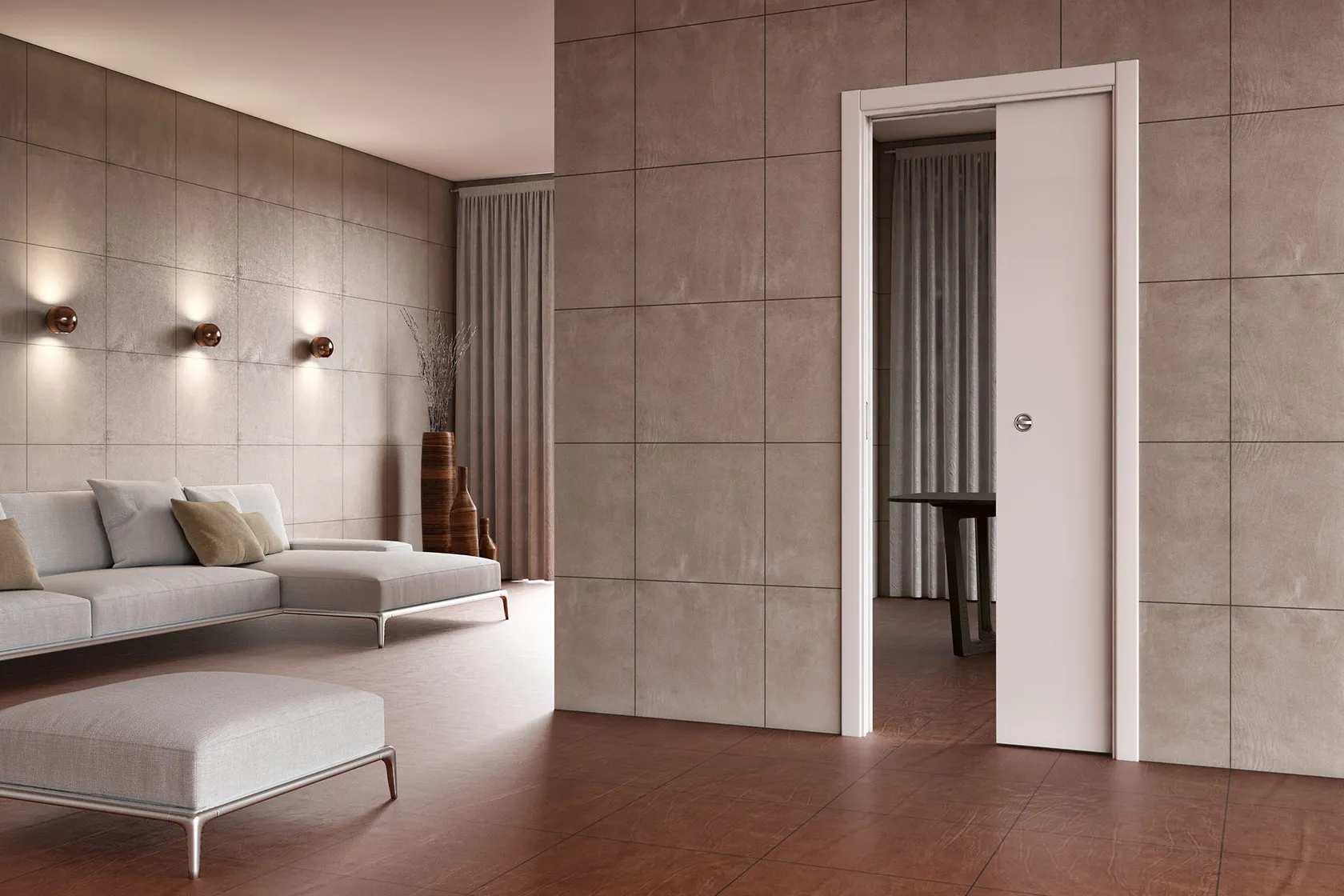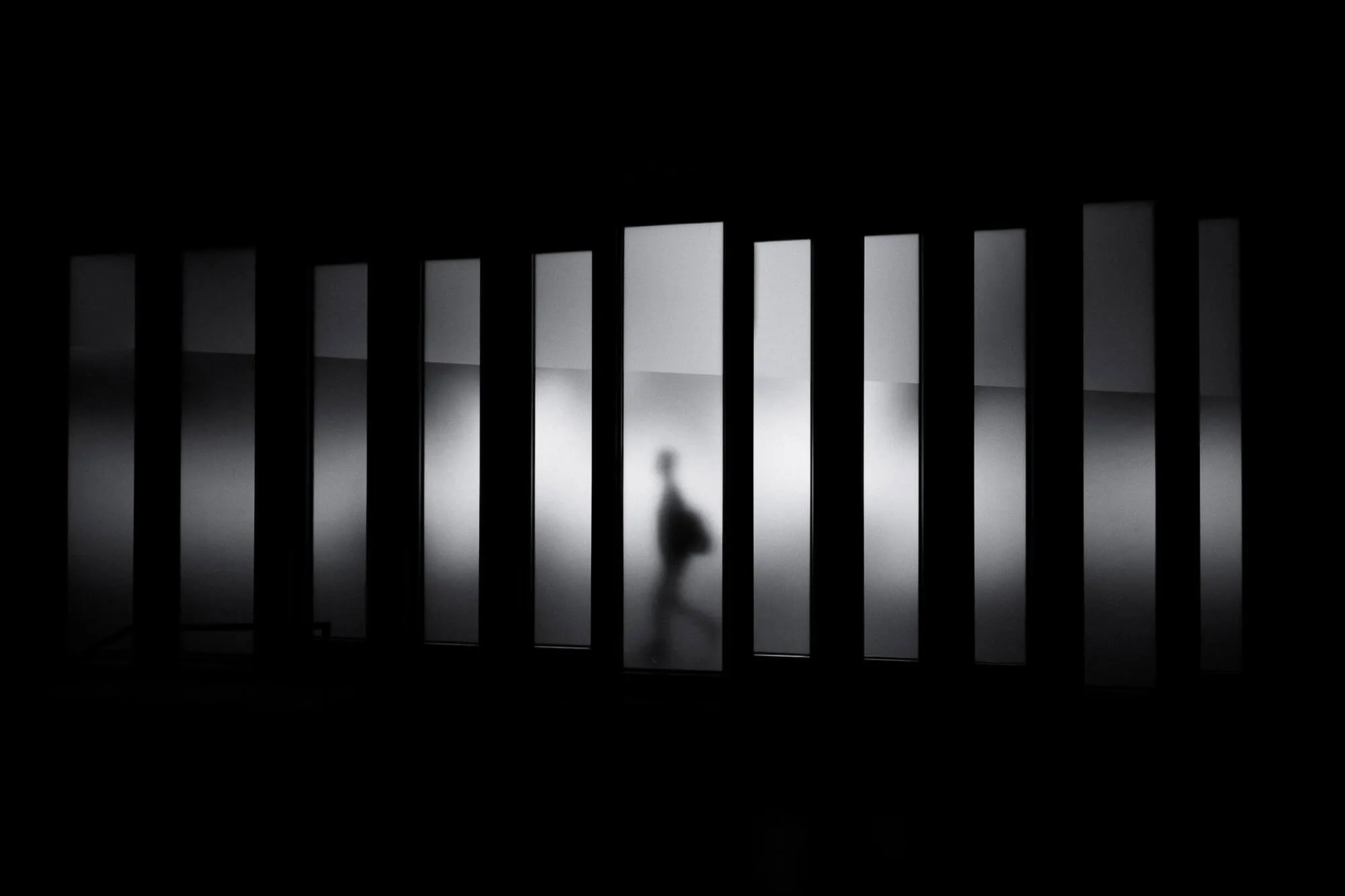Product focus 10/18/2021
Doorjambs and final architraves: what are they?

Doorjambs and final architraves: two elements of the door world that not everyone really knows.
If you are restructuring or furnishing your apartment o any type of property, you are certainly also spending your time choosing doors, which are fundamental connecting elements between one room and another, indispensable for both the functionality and aesthetics of the place in question.
Whether you opt for hinged doors, sliding doors with wall mounted track or sliding pocket doors, lately users have had more and more the opportunity to make choices taking into account the style and aesthetics of the place in question.
Depending on the style of your apartment, you can choose, for example, whether to opt for a classic door with jambs and architraves or for a flush-to-wall door with no frames, which ensures an effect of total continuity with the wall on which it is installed.
If you are restructuring or furnishing your apartment o any type of property, you are certainly also spending your time choosing doors, which are fundamental connecting elements between one room and another, indispensable for both the functionality and aesthetics of the place in question.
Whether you opt for hinged doors, sliding doors with wall mounted track or sliding pocket doors, lately users have had more and more the opportunity to make choices taking into account the style and aesthetics of the place in question.
Depending on the style of your apartment, you can choose, for example, whether to opt for a classic door with jambs and architraves or for a flush-to-wall door with no frames, which ensures an effect of total continuity with the wall on which it is installed.
Doorjambs and final architraves: what are they? General features
Also commonly referred to as frames, doorjambs and final architraves are decorative components of the door panel perimeter but are often mistakenly considered as a single element.
So what are the main characteristics of these two fundamental elements of door design?
Both are produced and cut to measure by specialised carpenters in e.g. Tanganyika wood (ready for lacquering or varnishing in the colours of your choice) or in metal, if you opt for the installation of a glass door, for example.
Doorjambs and final architraves can be installed on either plastered or plasterboard walls, depending on the type of masonry of your house.
In the case of sliding doors, Ermetika also supplies them complete with anti-dust brushes and rubber seals, guaranteeing the durability and perfect sliding and aesthetics of the door leaf over time.
So what are the main characteristics of these two fundamental elements of door design?
Both are produced and cut to measure by specialised carpenters in e.g. Tanganyika wood (ready for lacquering or varnishing in the colours of your choice) or in metal, if you opt for the installation of a glass door, for example.
Doorjambs and final architraves can be installed on either plastered or plasterboard walls, depending on the type of masonry of your house.
In the case of sliding doors, Ermetika also supplies them complete with anti-dust brushes and rubber seals, guaranteeing the durability and perfect sliding and aesthetics of the door leaf over time.
In detail:
The difference between doorjambs and final architraves is well known among experts in the sector, but this topic may also be of particular interest to those who are spending their time choosing the most suitable doors for their needs within an apartment or any room.
How do they differ?
How do they differ?
Final architraves
When referring to final architraves, this expression generally means the perimeter frame around the door panel. They can be made of either wood or metal.
Doorjambs
The doorjambs are wooden or metal components that are positioned along the wall opening where the door is installed.
If you decide to use a sliding pocket system, the doorjambs will only be present in the vertical parts of the door opening, whereas if you opt to use a more common hinged door, the jambs will also be present in the upper part.
If you decide to use a sliding pocket system, the doorjambs will only be present in the vertical parts of the door opening, whereas if you opt to use a more common hinged door, the jambs will also be present in the upper part.
Would you like your home to have a minimal and elegant style or an important classic design?
If the first option is your answer, Ermetika recommends installing a door from the Absolute line (flush with the wall), characterised by invisible links with the wall and the total absence of frames.
If the second option is your answer, it would be better to choose, for example, one of the products from the Evolution interior line, a classic solution with visible jambs and final architraves.
If the first option is your answer, Ermetika recommends installing a door from the Absolute line (flush with the wall), characterised by invisible links with the wall and the total absence of frames.
If the second option is your answer, it would be better to choose, for example, one of the products from the Evolution interior line, a classic solution with visible jambs and final architraves.
